Email Address enquiry@pellet-richi.com
Phone/Whatsapp 0086-13838389622
Email Address enquiry@pellet-richi.com
Phone/Whatsapp 0086-13838389622

Pig feed plant is an integrated pig feed processing system, which is suitable for processing pig feed of different growth stages and types. Pig feed accounts for more than 30% of the world's total feed, which determines the huge development space contained in pig feed processing. Richi Machinery is committed to creating customized pig feed production line solutions for customers, and has successfully applied and accumulated rich experience in many feed varieties such as piglets, suckling pigs, sows, and fattening pigs, etc. We can provide 1-100t/h pig feed processing solutions, suitable for pig feed mills and farms of various sizes.
The RICHI pig feed plant can be used to process pig pellets, pig powdered feed, pig crumbled feed and other types of feed. Different requirements and different pig feed production line schemes can be applied to pig feed mill factories and pig farms of various sizes.
Pig feed is the material basis for the development of pig breeding, and more than 70% of the cost of breeding is the expenditure of pig feed. However, proper processing of pig feed can not only reduce feed waste, but also improve product quality and animal feed utilization rate, thereby reducing breeding costs and obtaining good economic benefits.
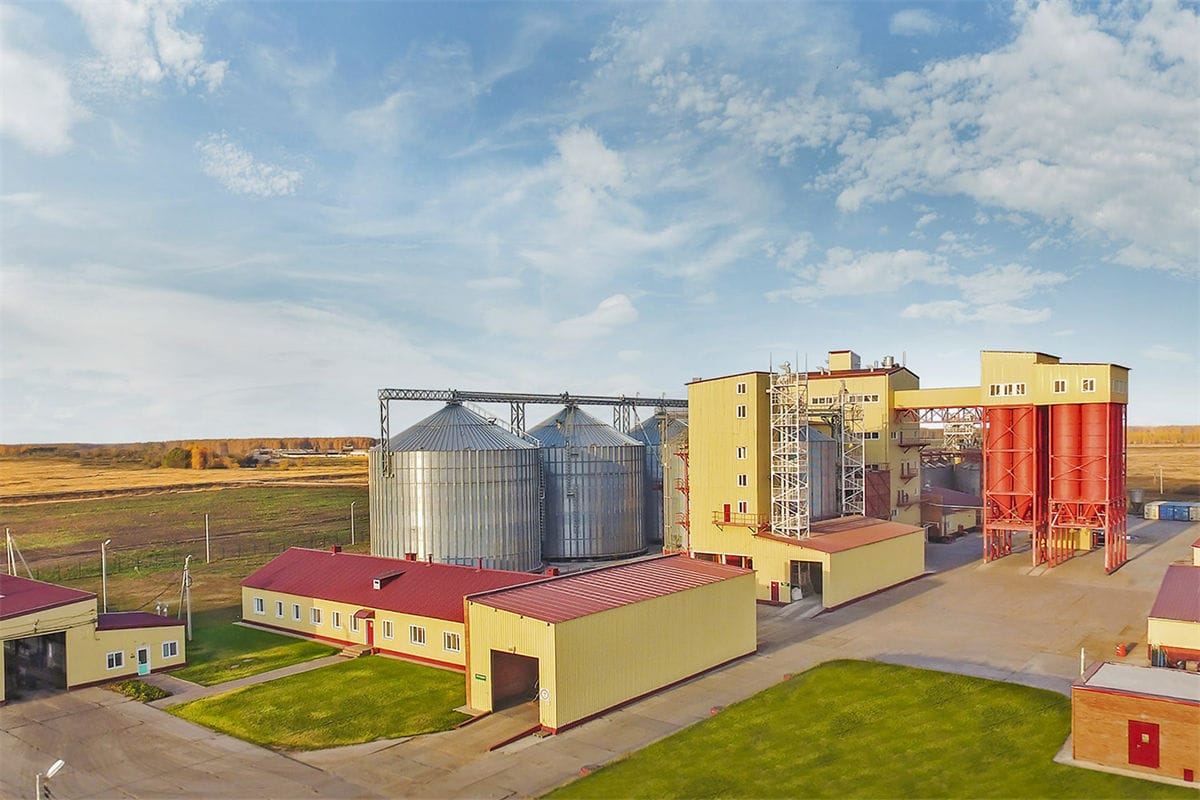
Professional pig feed factory can customize and produce various types of pig feed according to market demand. The pig feed production line can realize the production of multiple varieties and specifications of products to meet the needs of different customers.
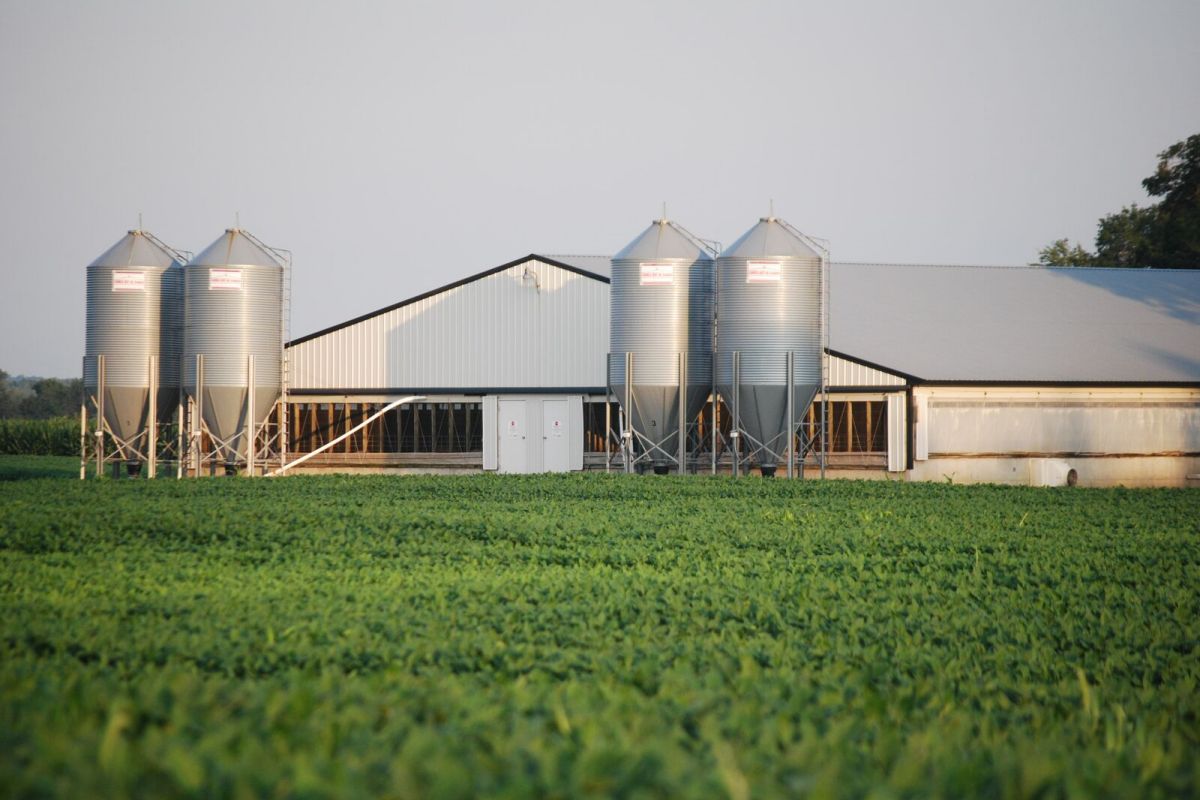
With the development of large-scale and intensive breeding, large-scale farms have an increasing demand for pig feed. The pig feed production line can meet the production capacity needs of large-scale farms, realize batch production, reduce production costs, and improve breeding benefits.
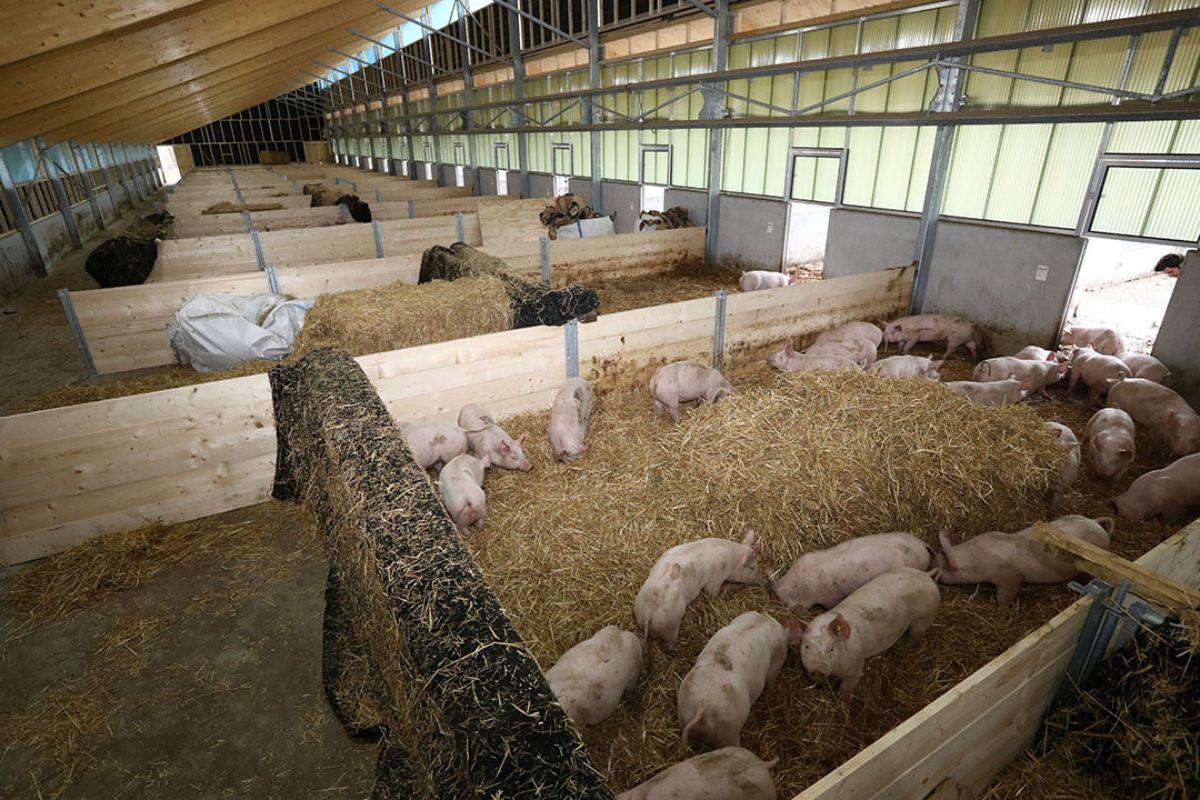
For family farms and small-scale farmers, it takes a large investment to buy a pig feed production line. However, by leasing or sharing equipment with other farmers, a certain degree of batch production can also be achieved to reduce production costs.
In short, as a tool that can achieve batch production, improve production efficiency and ensure product quality, the pig feed production line has been widely used in modern animal husbandry.
With the development of science and technology and changes in market demand, the future pig feed production line will be more intelligent, personalized and environmentally friendly, providing more support for the development of the breeding industry.



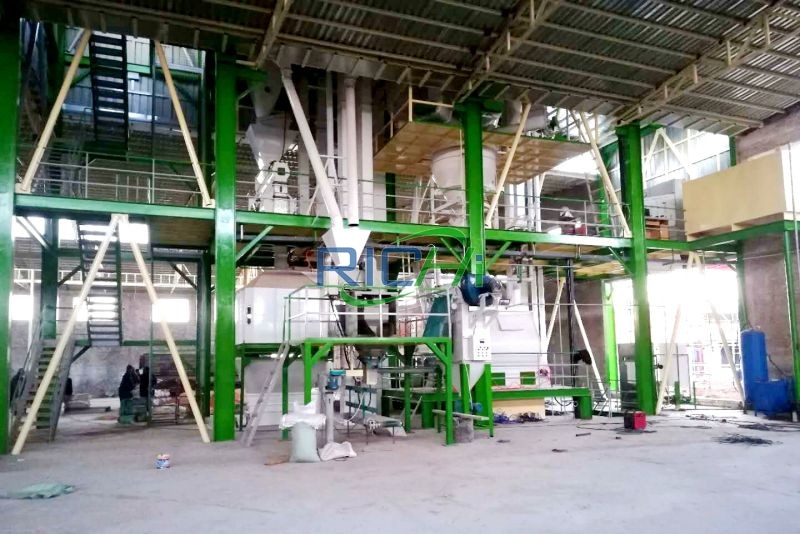
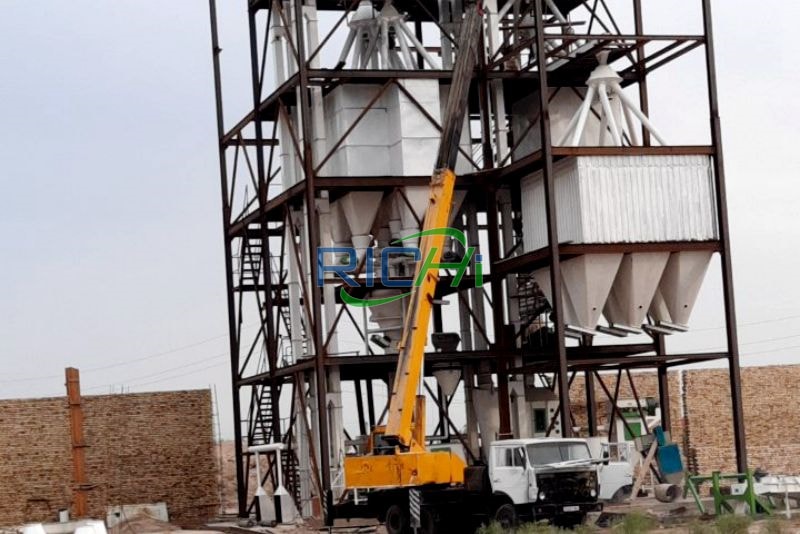


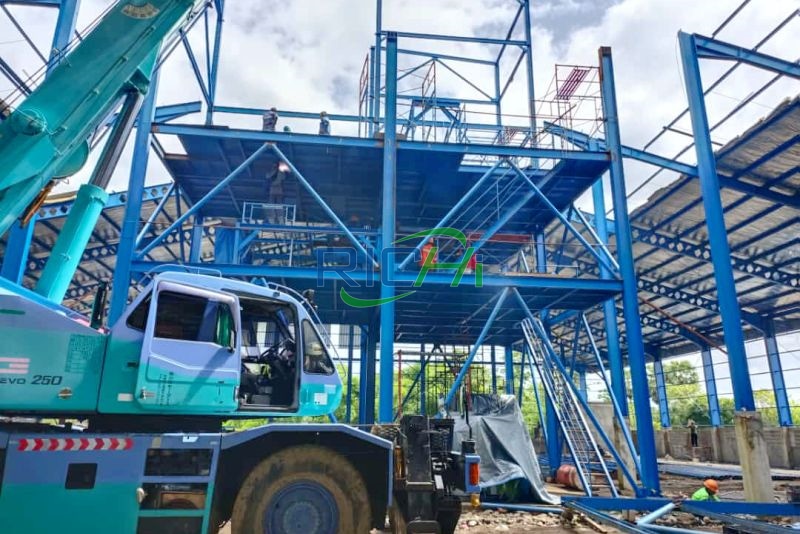
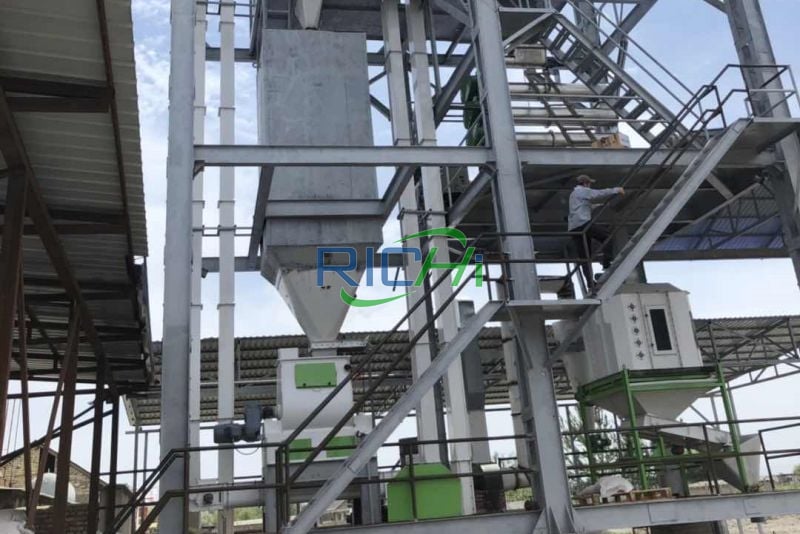
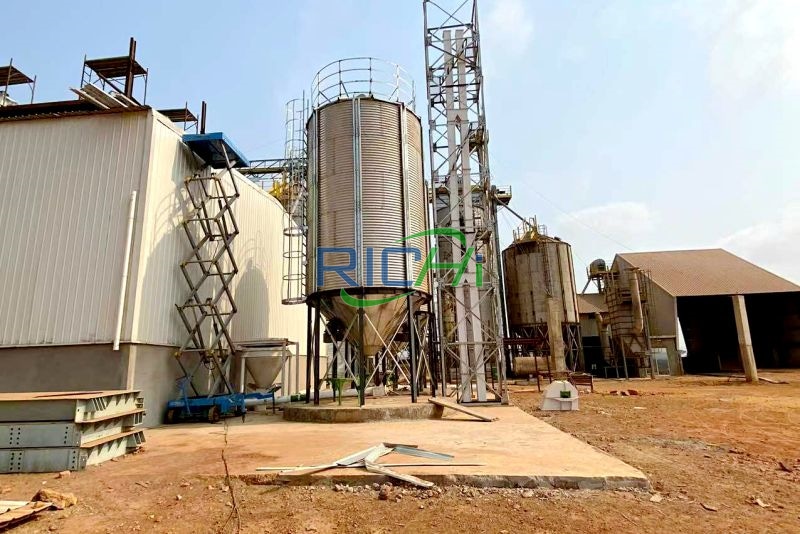

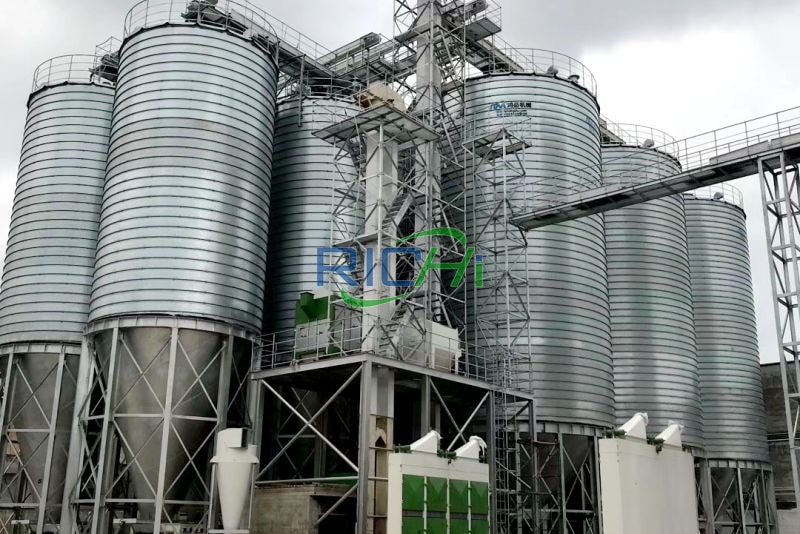
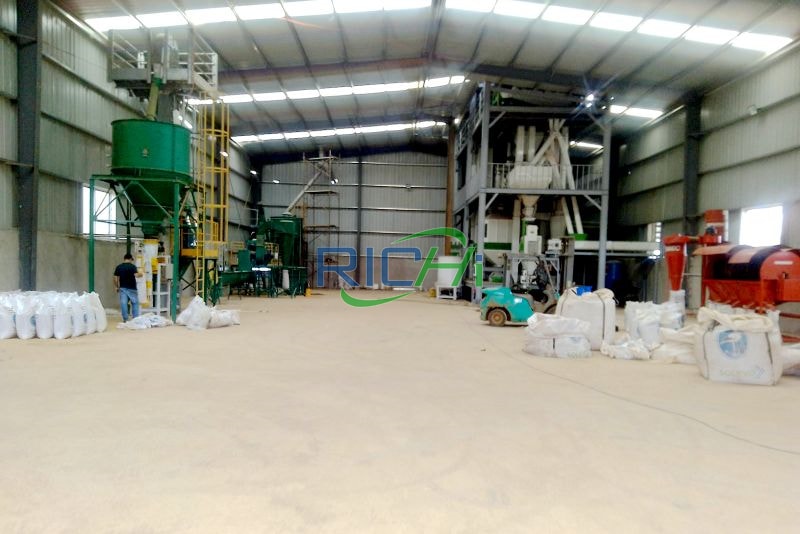
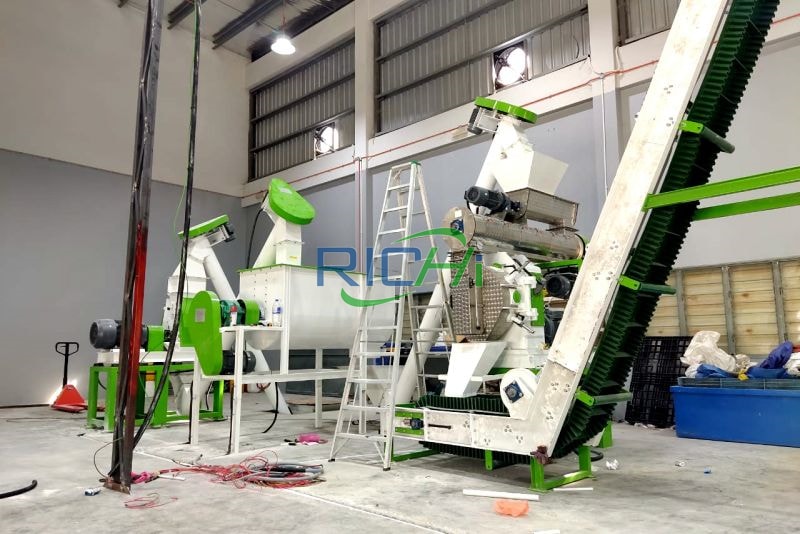
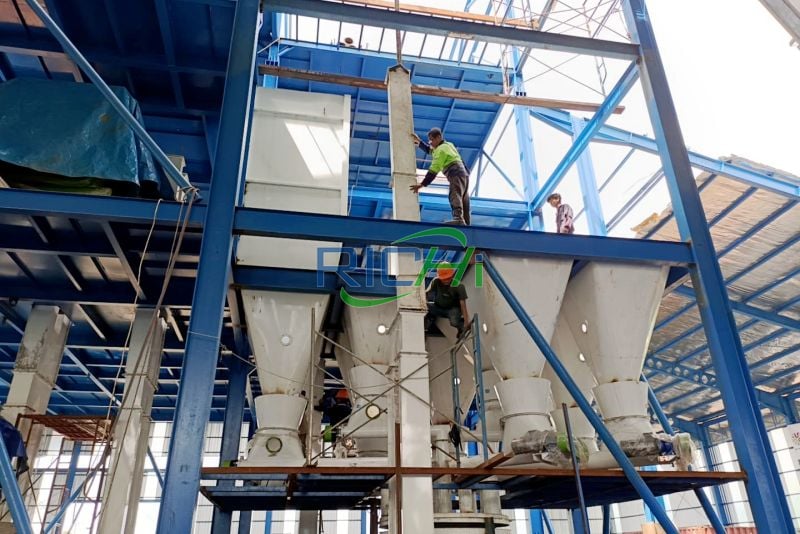
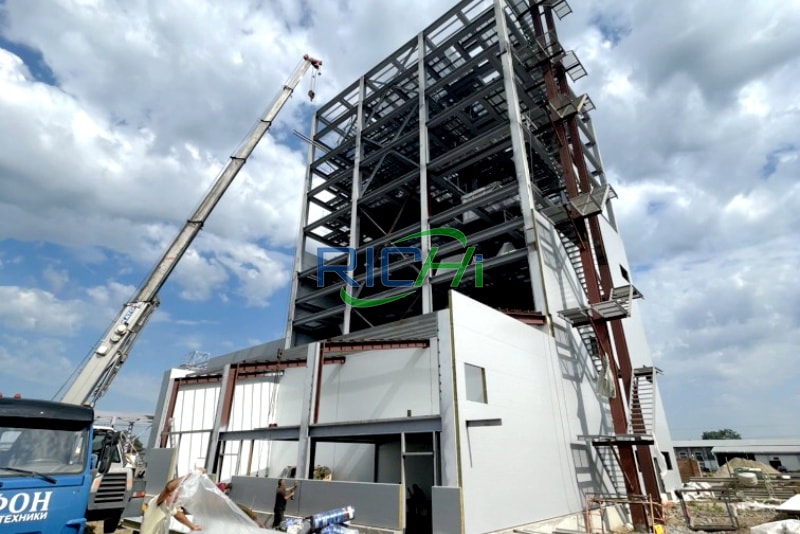
The configuration of the pig feed plant is carefully designed according to the on-site survey or the actual requirements of the customer, which fully reflects the rationality, effectiveness, applicability, large output, low wear and low operating cost of the pig feed mill design. According to different technological requirements, various types of pig feed machinery are combined to meet customers' different pig feed manufacturing process requirements.
| Scale | Total Power | Site Requirements | Installation Cycle | Pig Feed Plant Cost(USD) |
|---|---|---|---|---|
| 1-2T/H | 47-75KW | 300-500m² | 7-15 Days | 10000-50000 |
| 3-4T/H | 53-165KW | 300-700m² | 15-20 Days | 5,0000-12,0000 |
| 5-7T/H | 68-259KW | 400-800m² | 20-40Days | 7,0000-25,0000 |
| 8-10T/H | 125-410KW | 800-2000m² | 45-60 Days | 150,000-300,000 |
| 12-20T/H | 358-620KW | 1500-3000m² | 60-90 Days | 250,000-580,000 |
| 25-40T/H | 545-870KW | 2000-4000m² | 90-120Days | 45,0000-850,000 |
| 50-60T/H | 710-1120KW | 3000-5000m² | 100-140 Days | 900,000-1,400,000 |
| 60-80T/H | 815-1370KW | 5000-8000m² | 130-160 Days | 1,450,000-1,800,000 |
| 80-100T/H | 1230-1700KW | 8000-20000m² | 160 -190Days | 2,000,000-2,800,000 |
According to customer different animal feed production types, different output configuration can be customized. We devote ourselves to undertaking all pig feed production line with 1-100 tons per hour and to providing more value added service to all the customers.
Richi Machinery provides global customers with a one-stop, complete set of professional pig feed plant solutions (business plan for pig feed production) to solve the problems of customers, especially pure investment customers, such as technical difficulties and poor understanding of pig feed equipment, so that the needs and positioning of the project are more clear, and at the same time, the customer's equipment selection range is more concentrated, reducing the cost of energy and financial resources.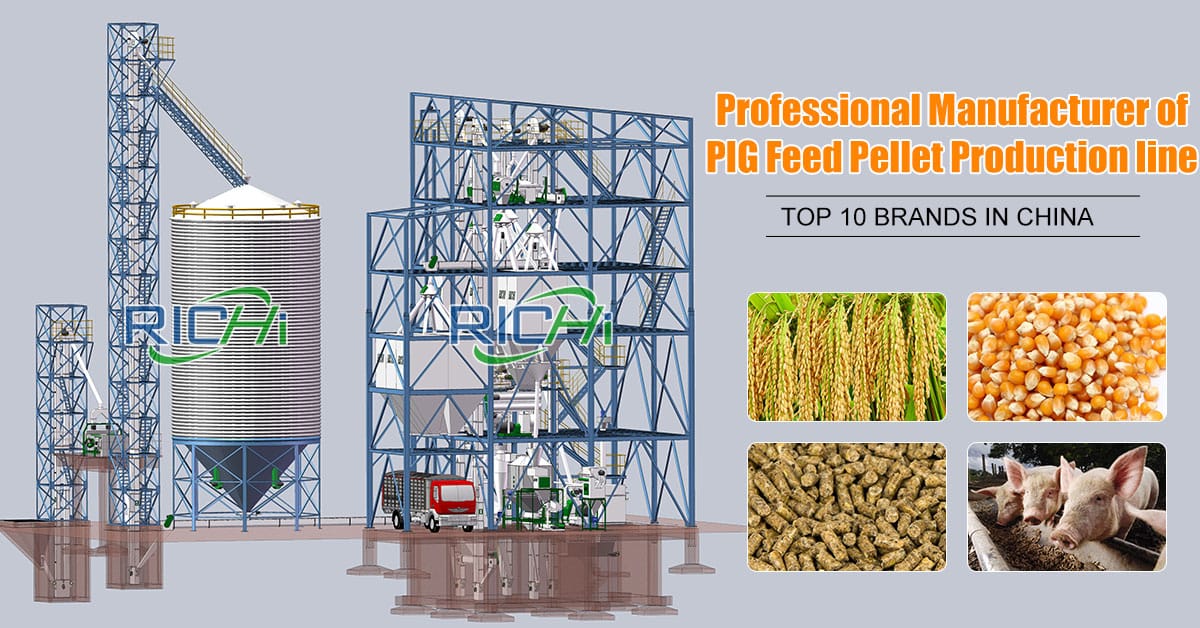
If you want to start a new pig feed pellet line for your pig feed mill or pig farm, you should pay attention to the following main processes:
Due to the influence of various objective factors such as pig feed raw materials, processes, formulas, project area, local regulations, etc., various technological pig feed production process and pig feed equipment configurations have appeared in the actual pig feed factory design.
Therefore, if you want to build a high-efficiency, high-quality, high-return pig feed production line, please do not hesitate to contact Richi Machinery and communicate directly with our engineer team, you will definitely get a satisfactory answer. The following is the pig feed mill machine configuration display of pig feed production business plan we have done in several customer project :
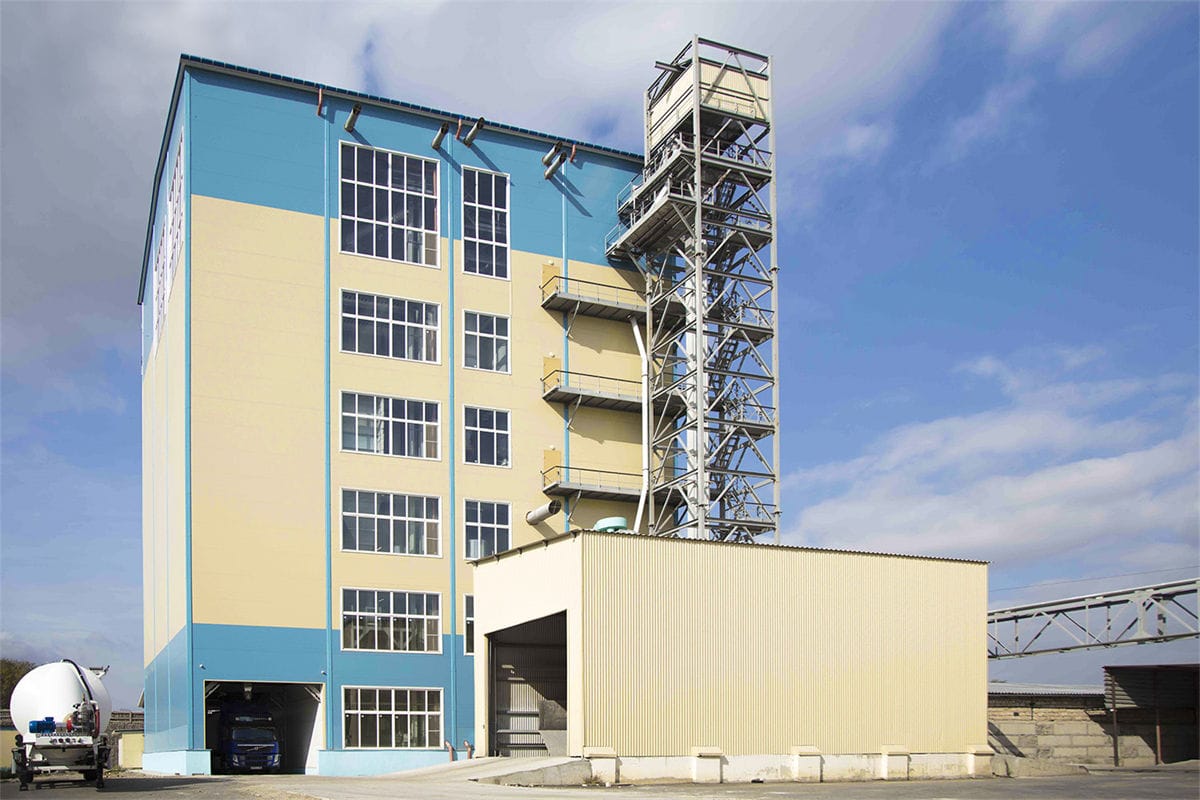
| Pig feed making machine name | Model | QTY |
|---|---|---|
| pig feed grinding machine | SFSP66*80 | 1 |
| pig feed mixer machine | SHSJ2 | 1 |
| pig feed pellet machine | SZLH420 | 1 |
| pig feed expansion equipment | SPZS225 | 1 |
| Auxiliary equipment: Batching scale*PCS10/PCS05, Granular material sieve*SCY80 , Powder sieve*SQLZ60×50×100, Cooling equipment*SKLN6, Belt scale (both powder and granular feed), packing range 20-50kg/bag, 6-8 bags/min, MCC Control Center; Mimic Control Panel, etc. | ||
| Complete set pig feed plant cost: 100,000-300,000 USD | ||
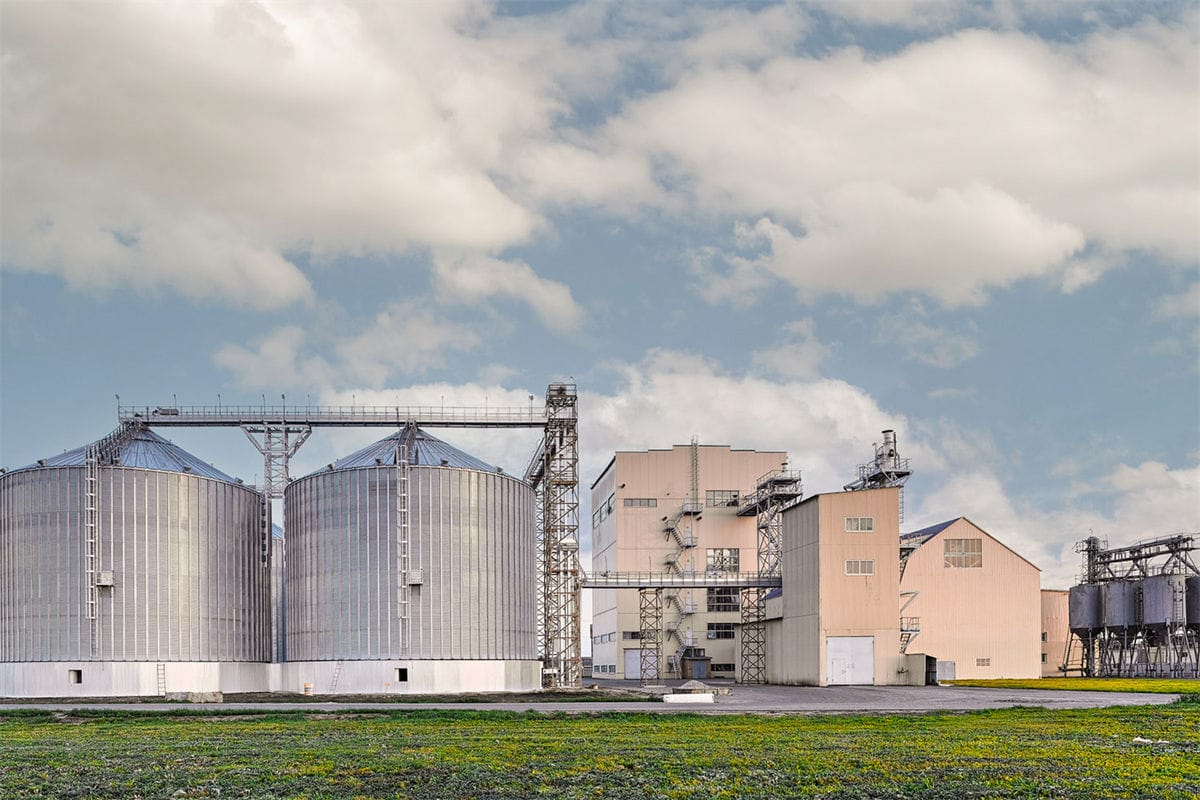
| Pig feed machine | Model | QTY |
|---|---|---|
| pig feed mixer machine | SLHJ4.0A | 1 |
| pig feed grinder | SFSP66*80b/SFSP138*40E | 2 |
| Rotary distributor | TFPX4/TFPX6/TFPX8 | 4 |
| pig feed pellet machine | SZLH 420 | 2 |
| Auxiliary equipment: Batching scale*PLC1.0A, Pulse dust collector* TBLMa.12A, Scraper conveyor*TGSS25, Dust collector, Bucket elevator*TDTG40/28, Drum type precleaner*SCY80, Screw conveyor (air locked)*TLSS25, Cooling machine*SKLN20x20, Rotary screener*SFJZ125*2C, etc. | ||
| pig feed mill cost: 250,000-580,000 USD | ||
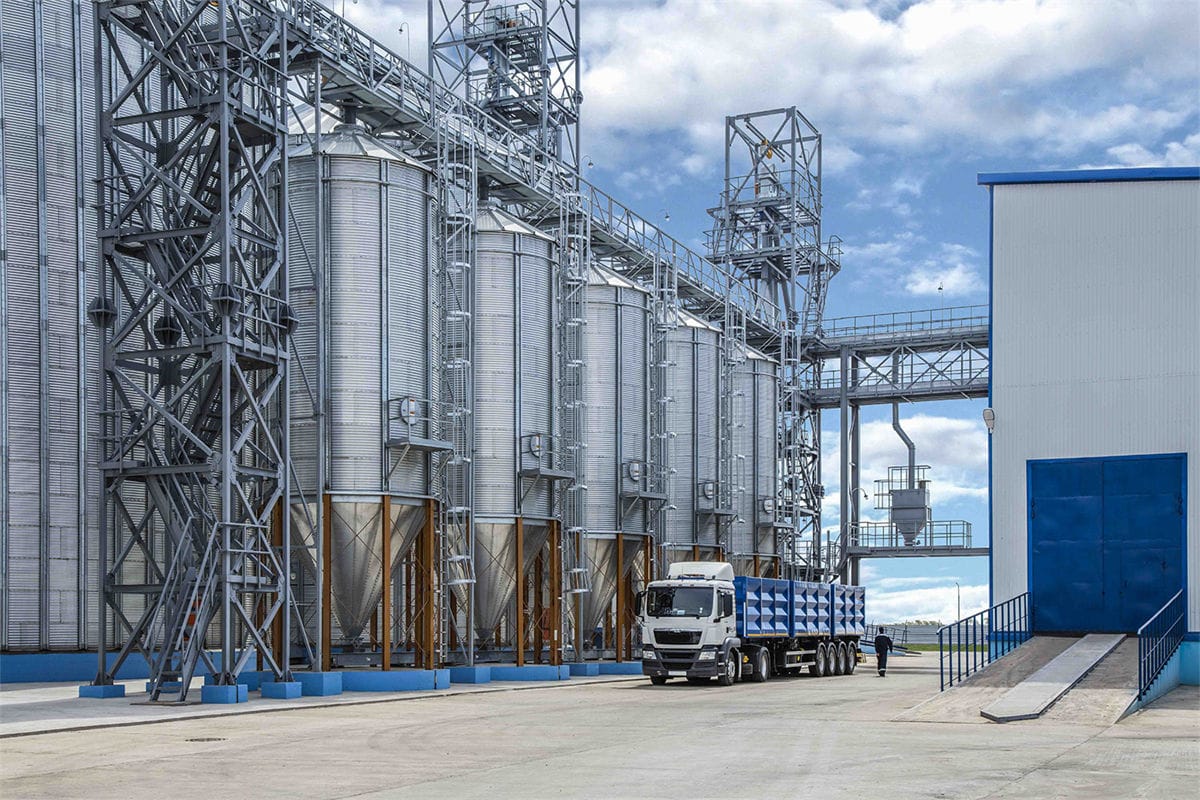
| Pig feed making machine | Model | QTY |
| pig feed hammer mill | SFSP66*80 | 4 |
| pig feed mixer machine |
SLHJ4.0A |
2 |
|
cooling Machine |
SKLN20x20 |
4 |
| Pellet making machine for pig feed | SZLH420 | 4 |
|
Automatic Packing machine |
DCS-50 |
4 |
| Auxiliary equipment:
Silos (φ14.6m*21C,Volume 4169m³), Double Drum precleaner*TCQYS100/220B, Vibrating screen and Air and screen cleaner*TQLZ180x200, Pulse dust collector*TBLMa48A, Permanent magnetic sleeve*TCXT30, Temperature measuring system, Batching scale*PLC1.0A, Crumbler*SSLG15*150, etc. |
||
| pig feed production line price: 600,000-3,000,000 USD | ||
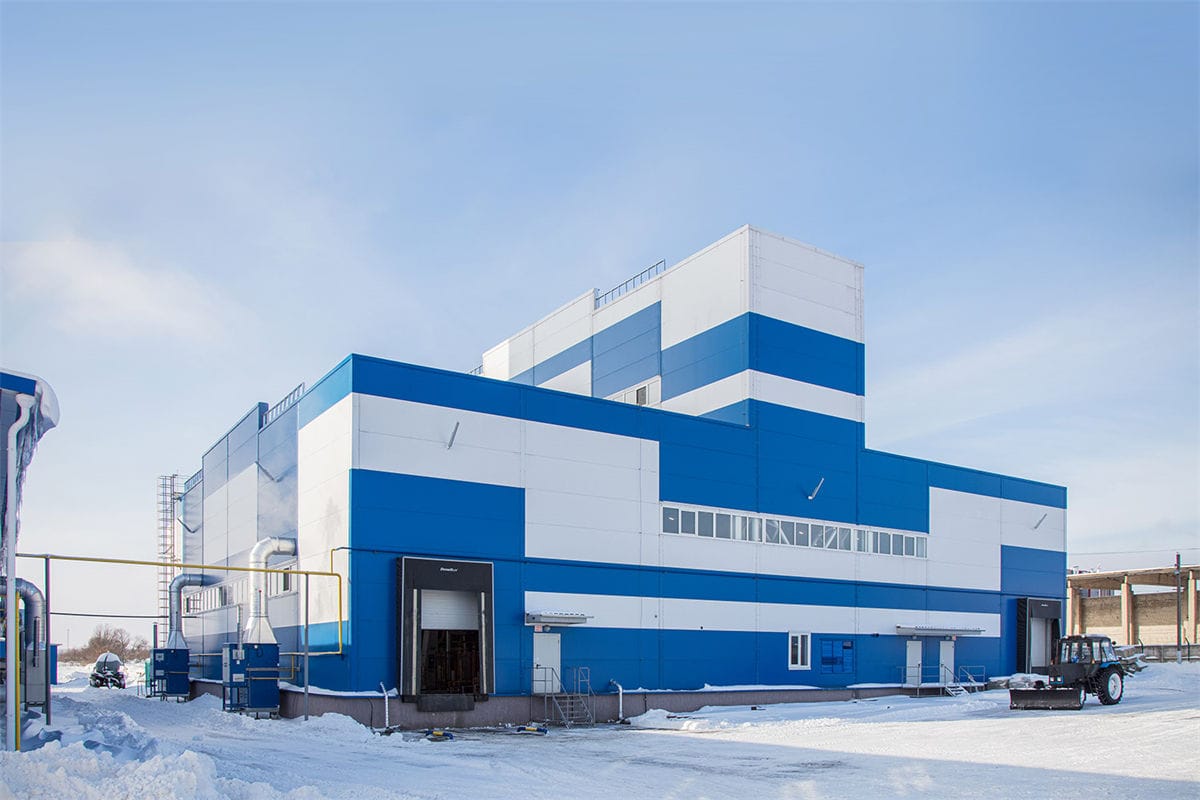
| Pig feed making machine | Model | QTY |
| pig feed grinding machine | SFSP66×80 | 1 |
| pig feed mixer machine | SLHJ2A | 1 |
| pig feed pellet making machine | SZLH420 | 1 |
| Cooling Machine | SKLN20x20 | 1 |
| Packing equipment | DCS-50 | 1 |
| Auxiliary equipment: pellet screener*SCY80, powder screener*SQLZ60×50×100, rotary distributor*TFPX6, batching scale*PLC1.0A, small material checking balance*PLC0.1B, crumbler machine*SSLG15x150, bucket Elevator*TDTG36/28, dust removal system, grease addition system, rotary screener*SFJH125*2C, sewing machine,belt conveyor, etc. | ||
| Cost of pig feed production line:150,000-300,000 USD | ||
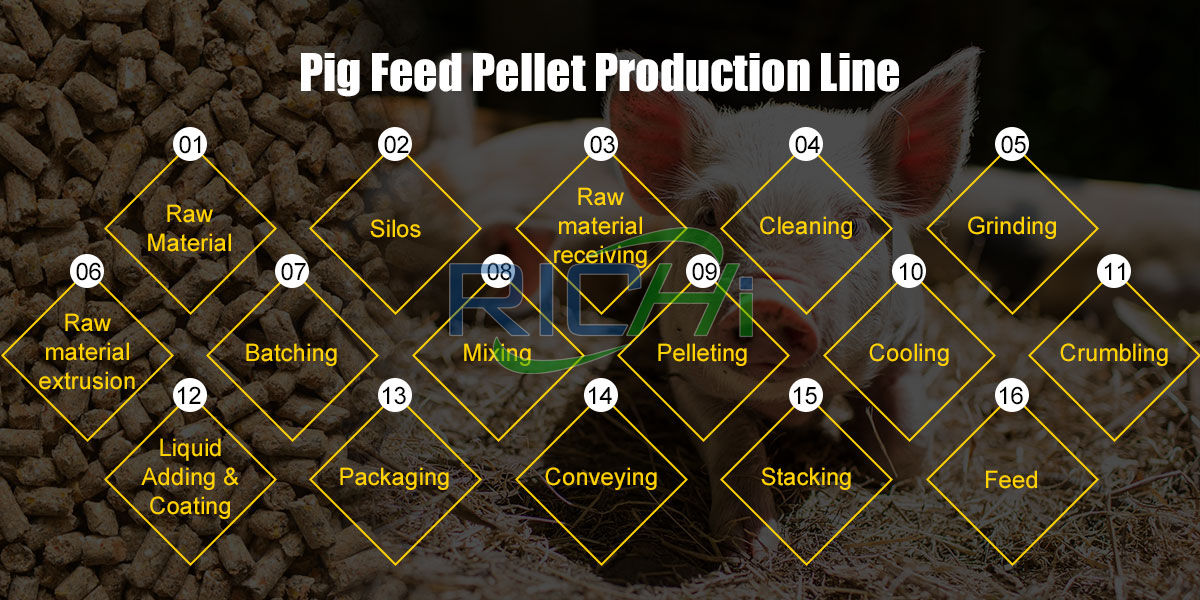
01
Raw material receiving section
The receiving of raw materials is divided into the receiving of main raw materials and the receiving of side raw materials. The receiving of main raw materials refers to grains, and the receiving of secondary raw materials refers to raw materials other than grains.
The main raw materials required for pig feed production are transported into the factory by automobiles, weighed and inspected by automobiles, cleaned by receiving equipment, magnetically separated, and transported into bulk warehouses for storage.
02
Raw material cleaning and crushing section
The raw materials that need to be crushed enter the production workshop through the conveying equipment, and the impurities are removed through the preliminary cleaning screen, and the magnetic impurities are removed by the magnetic separator before entering the smashing warehouse.
The raw materials in the powder silo are crushed to the qualified particle size by the pig feed hammer mill crusher and then distributed to the raw material silo for storage by the conveying equipment; the raw materials that do not need to be crushed enter the pig feed plant through the conveying equipment, and the impurities are removed by the primary cleaning screen and the magnetic impurities are removed by the magnetic separator, enter different batching bins for storage.
03
Ingredients and mixing section
According to the requirements of the pig feed formula, various raw materials participating in the ingredients enter the mixer at one time through the computer-controlled ingredients weighing. Two batching scales, one large and one small, are used in the batching process to ensure the accuracy of the batching and shorten the batching time.
Some feed additives, vitamins and other raw materials with a small amount are manually weighed and then manually put into the mixer. Various raw materials are mixed in the pig feed mixer machine, and various liquid raw materials (oil, methionine) are added during the pig feed plant mixing process.
The mixed finished powder can be granulated according to the needs, or it can be directly packed into the finished product warehouse or loaded into the bulk truck to leave the pig feed plant.
04
Pelleting section
The pig feed raw materials that need to be granulated are tempered by a conditioner, so that the temperature of the material reaches 80-85 degrees, and the moisture reaches about 17%, and then granules of different diameters are made by a pig feed granulator.
Afterwards, the unqualified materials are re-granulated through classification and screening, and the qualified pellets products enter the finished product warehouse and pack them into the warehouse or enter the bulk warehouse and use the bulk truck to carry them out of the pig feeds plant
Note that in the pig feed production line pelletizing process, the feed components are extruded out of the ring die of the pig feed pelletizer under pressure. The pig feed plant pelleting process itself can frictionally heat the feed.
Most pig feed companies have steam heating the feed before pelleting, but some pig feed companies do not use steam heating, that is, cold pelleting, and only rely on the pressure of the pig feed pellet mill to make the feed extruded from the ring die. Therefore, the pig feed pellet production line granulation process includes dry granulation or wet granulation process.
After the pelleting process, the pig feed pellets will go through the cooling and screening process, and then be packaged or transported directly to the farm by bulk truck according to customer needs.
(In addition, according to the requirements of pellet size, if small pellets are required, a crumbling section needs to be added after cooling.)
The equipment of pig feed plant mainly includes water drop crusher, conveyor, batching machine, mixer, granulator, cooler, packaging machine, screening machine, cleaning equipment, silo system, batching equipment, etc. The use of these equipment can improve the efficiency and quality of feed production and provide strong support for pig feed production.





The selection of equipment should be based on comprehensive considerations such as product type, production volume, and operating costs. On the premise of reasonable selection of equipment, timely inspection of the equipment and necessary daily maintenance and maintenance of the equipment can extend the service life of the equipment, increase productivity, and reduce costs.
In short, pig feed plant equipment has become mature and popular. By reasonably configuring various equipment, production efficiency can be improved, costs can be reduced, and the quality and safety of feed can be guaranteed.

Pig feed is usually a feed for pigs that is composed of protein feed, energy feed, roughage, green feed, silage feed, mineral feed and feed additives. Divided into categories: complete feed, concentrated materials and premixed materials. The complete feed is a four-part compound feed consisting of protein feed, energy feed, roughage and additives.
The complete feed on the market is mainly pelletized feed that has been machine-processed and pelletized, some of which are extruded pellets, which can be used directly and can fully meet the nutritional needs of the pigs being fed. At present, the most common pig feed is complete pellet feed. Pig pellet feed is a refined feed made by pulverizing and mixing various feed materials through the combination of high temperature, pressure and moisture.
During the pig feed plant pelleting process, steam not only gelatinizes the starch and improves the digestibility of feed, but high temperature can also disinfect, sterilize and kill insects, reducing the risk of diseases of pigs.
Pelleting can improve the utilization rate of animal feed and reduce the incidence of ketosis, poor appetite and acidosis; pelleting can improve the animal's feed conversion rate and daily weight gain. In addition, compared with powdered feed, pig pellets have better palatability and can avoid nutritional imbalance caused by pigs' picky eating of certain feeds.
Therefore, the application of pellet feed in pig production will have broad prospects.
When designing the pig feed pellet plant, the external factors of the pig feed production line and the internal factors of the pig feed factory must be considered, including:
Geographical factors include topography, topography, geology, status and other factors. Geographical factors affect the overall layout design and layout of the factory, water supply and drainage system design, civil engineering design, transportation route design, and product cost.
Climatic factors include temperature, humidity, wind direction and hydrology. Climatic factors affect the storage of raw materials and products, whether the operating environment requires temperature adjustment pig feed equipment, whether the storage and processing of raw materials and products require dehumidification or drying equipment, general layout and environmental protection engineering design, water supply and drainage system design and civil engineering design.
Raw material factors mainly affect pig feed plant process design and the determination of pig feed production procedures; power factors affect process design and auxiliary design.
In addition, the pig feed plant design should also consider the relationship between personnel and materials, the relationship between personnel and pig feed production equipment, the relationship between materials and pig feed making machine, the relationship between equipment and equipment, the relationship between materials and materials, the relationship between personnel and personnel, and the relationship between personnel, materials, equipment and space, etc., factors within the pig feed production line or pig feed factory.
Different breeds of pigs require different nutrition. Lean pigs and fat pigs have different requirements for protein. Under normal circumstances, lean pigs require more protein, and three-way hybrid lean pigs require more protein than binary hybrid lean pigs.
For example, when piglets grow up to 5-8 weeks, their digestive system matures day by day, pigs weigh nearly 10kg, demand for starch increases, and piglets grow fast. At this time, it is necessary to consider the nutritional needs of the piglets and whether the feed is also considered. It is palatable and easy to digest. For different types of pigs, the breeding standards should be used flexibly.
The quality of the pig feed raw materials must be reliable and they must have the nutritional value that meets the requirements. Raw materials are the basis of pig feed, so the choice of raw materials is the most basic and the beginning of making good feed.
In addition, the stability of the pig feed raw materials should be high, which is convenient for subsequent pig feed production. Good raw materials have high utilization rate and good stability, and the products produced not only meet the nutritional needs of pigs, but also meet the requirements of labeled production.
The additives commonly used in pig feed include pine needle powder, glauber's salt, kelp powder, zeolite, orange peel powder and so on. Additives can provide trace elements required by pigs, play a subtle role in regulating the physiological functions of pigs, help pigs grow and develop, promote pigs' appetite, and improve piglet's disease resistance.
For piglets, improving disease resistance is very important. There is a limit on the proportion of various ingredients, especially the amount of minerals and additives must meet the requirements to meet the pig feed line production standards. Pengcheng suckling pig feed can effectively improve the physique of suckling pigs and enhance the immunity of piglets.
Pork is one of the most common foodstuffs in people's lives. The safety of feed is directly related to food safety. Food safety issues have become a hot topic of public concern in recent years.
Therefore, the safety of pig feed is not only related to the social benefits of pig feed enterprises, but also whether the product involved is legal will directly affect the long-term development of the pig feed company. From feed ingredients to packaging, pig feed manufacturers need to strictly control.
There are some common faults that the pig feed production line may encounter during operation. Here are some common faults and their possible causes:
For the above faults, timely maintenance and regular inspections are the key to preventing and solving problems. In addition, operator training and skill improvement can also help them better discover and handle faults and ensure the stable operation of the pig feed production line.
In summary, as a professional feed machinery manufacturer, RICHI Machinery has rich experience and professional technical strength, and can provide all-round support for the construction of feed pellet production lines.
By choosing the right pig feed mill equipment suppliers and partners, such as RICHI Machinery, it can better assist the construction and operation of pig feed pellet production lines, improve production efficiency and product quality, and achieve a win-win situation of economic and environmental benefits.
Richi Machinery have provided animal pig feed production lines, pig feed mills and single pig feed machines for thousands of feed manufacturers, and we hope that in the future, we can also help you successfully realize a high-efficiency, high-quality, and high-return feed production business.
The followings are some pig feed mill project proposal / pig feed production business plan/ pig feed plant project report for you:


Introduction of RICHI
Strength certification
Richi Machinery is a professional manufacturing enterprise integrating scientific research and development, manufacturing, sales and service. We have developed and manufactured multifunctional pelletizers, grinders, mixers, dryers and more than ten categories and more than 30 models of complete machine products are widely used in feed, biomass, organic fertilizer, pet supplies, solid waste recycling, chemical industry, road construction and other fields.
All RICHI products have passed ISO9001:2008 international quality system certification, EU CE certification and Customs Union CU-TR certification, successfully serving more than 2,000 customers in more than 100 countries and regions around the world.
In RICHI, every equipment and every pellet production line business plant can be customized. We will formulate multiple sets of pellet production process plans for comparative analysis according to the actual needs of customers, select a reasonable plan, and realize private customization.
Our services run through all aspects of on-site terrain and environment survey, production line process design, raw material testing, cost requirement analysis, project investment budget, equipment installation and commissioning.




Quality Control
Richi Machinery
We adhere to the ISO9001 quality management system, and strictly implement international standards for product design and manufacturing processes. In terms of management systems, there are product quality accountability systems, product quality accountability systems, and safety production management systems; in terms of management tools, QC quality control management, SPC statistical process control, sampling inspection and measurement system analysis are used for quality control, to achieve effective control of the entire process of equipment production, and never let go of any quality hidden dangers that may affect customer operations.

RICHI has always been adhering to the spirit of craftsmanship to make every detail good, especially in the link of equipment preparation and delivery, we follow the standardized process: preparation order check-equipment factory quality inspection-packing list re-inspection-scientific packaging and transportation, ensure the safe and non-destructive delivery of equipment.
According to customer needs, RICHI installation engineers will guide the construction of site infrastructure, equipment installation and commissioning and trial operation of the entire production line throughout the process. When the relevant project indicators reach the design standards, the client will carry out the project acceptance.









After-sales And Training
Richi Machinery
We have built a team of nearly 100 technical engineers to solve a series of problems in the project from consultation, site survey, sample analysis to plan design, installation and commissioning, and maintenance. We provide comprehensive and systematic training for the technical staff of each customer to better serve the customer's project needs.
After the technicians have finished their studies, RICHI will provide follow-up technical support services, and the training engineers will follow up the project use effects in the later stage to ensure the stable operation of the customer's project.